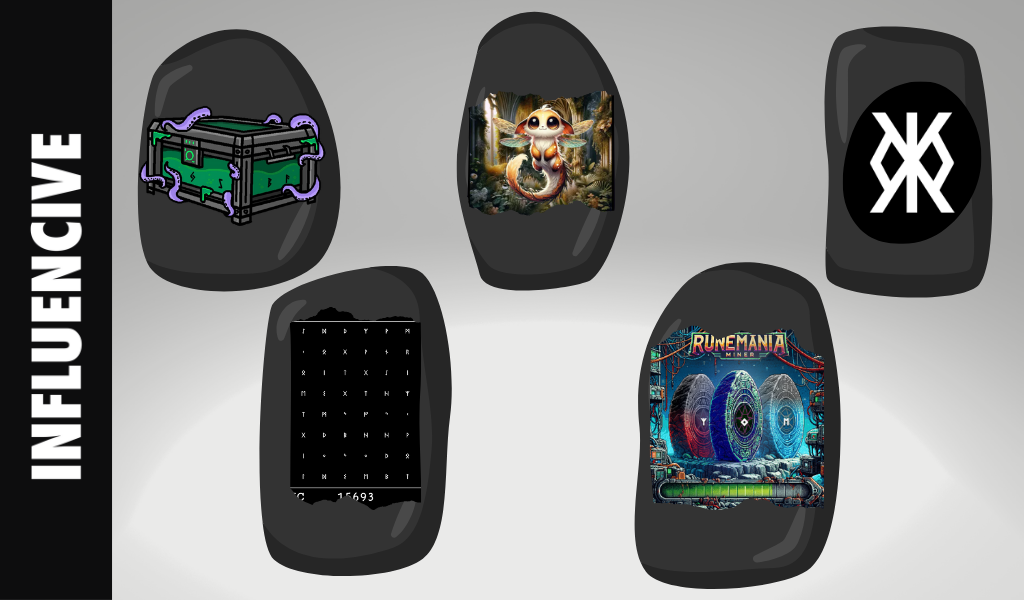Airdrop season is in full swing on Ordinals, generously rewarding early users and holders of high-profile collections with amounts reaching into the thousands of dollars. Notably, Rune mining has emerged as the common thread connecting the most prominent airdrops during this period.
As Casey Rodarmor prepares to launch Runes at the upcoming halving event in April, various builders have been launching their projects in anticipation. Here are the top 5 so far:
RSIC
The RSIC Metaprotocol was the first to burst onto the scene and kicked off the Rune airdrop meta, surprising everyone by distributing 21,000 Rune Specific Inscription Circuits (RSICs) to active Bitcoin Ordinals addresses. Once activated, an RSIC initiates rune mining, continuing until the impending Bitcoin halving in April at Block 840,000, when accrued tokens become claimable.
The RSIC distribution didn’t come without controversy, sparking division within the Ordinals community—excitement over the innovative launch approach versus concerns about fairness favoring whales. Some say the camps can be simplified into those who received an RSIC airdrop and those who did not.
The rarity of each RSIC, indicated by symbols in the lower right-hand corner, influences market value, with exceptionally rare symbols fetching impressive prices, such as high as 3.25 BTC ($165,000). As the halving approaches, the RSIC team promises a raffle for 15% of the entire supply up for grabs for five lucky winners. Each RSIC earns one raffle ticket for every consecutive block it was held in the address when Block 840,000 is eventually mined.
- Official X Account: @rune_coin
- RSIC Dev: @the_runedev
Rune Guardians
Crafted by @1nacoleon1, the Rune Guardians consist of 10,000 ordinals that were airdropped to wallets holding approximately 20 collections, including DeGods, OMB, Quantum Cats, Ordinal Punks, and more.
The collection features three tiers: Keepers (9,700), Sentinels (200), and Guardians (100), each with varying rarity levels. While Keepers were airdropped, Sentinels and Guardians are gradually offered for purchase to core believers of the project and high profile founders and builders in the Ordinals space.
Rune Guardians began accumulating runes from Block 800,000, and similar to RSIC, will continue until Block 840,000. Accumulation rates vary based on the token’s symbol on each Rune Guardian.
RSIC mines to the holding address, whereas Rune Guardians mine directly to the inscription, introducing unique game theory dynamics. While RSIC might theoretically depreciate over time due to a diminishing pool of available Runes, Rune Guardians are expected to appreciate as the halving approaches. Transferring the asset right before the halving reallocates the entire balance to the new holder, creating an interesting dynamic to observe as the countdown to Block 840,000 ticks down.
- Official X Account: @RuneGuardians
Runestone

In response to RSIC’s airdrop concerns, the Runestone initiative emerged, led by Leonadis. With art now complete, 112,383 Runestones are poised for inscription and distribution to eligible Ordinals addresses. Runestone operates as a 100% volunteer effort with no team allocation, relying entirely on community support.
Unlike other projects, Runestone boasts straightforward tokenomics, avoiding complexities like staking, mining, and off-chain indexing. The initiative prioritizes simplicity to ensure widespread accessibility. Each address receives one Runestone, and holding it during the second snapshot date (likely around block 840,000) makes an address eligible for a specified amount of Rune tokens. This fair distribution model encourages participation, exclusively available to those who participated in the first year of Ordinals.
- Official Discord Server: https://discord.gg/H3uFMRcp
Runex
RuneX, launching on November 7th, 2023, claims to be a groundbreaking social exchange for PIPE, Runes, and more, blending Uniswap’s features with Friend.Tech’s innovation on Bitcoin’s robust foundation. Early RuneX platform adopters vied for an Unnamed PFP, the highest valued asset in the RuneX ecosystem.
To participate in the RuneX airdrop, accumulate honor—a unique token tied to the platform. The Runes airdrop token provides instant utility as insurance, boosting honor rates and potentially reducing platform fees. Honor accrues through staking Bitcoin on the platform or engaging in transactions.
- Official X Account: @RuneX_Tech
Rune Mania Miner
Rune Mania Miner introduces a complex yet intriguing mining operation set in the future wastelands. With 3,547 RMMs airdropped to dedicated RSIC miners equipped with active RSIC Boosts, the operation revolves around the Rune Mania Miner Algorithm (RMMA).
This algorithm governs the Mania Multiplier, a dynamic factor influenced by stones, boosts, and runes. The five RMMA Boosts—Mining, Mana, and Block Boosts—play key roles in mining output. Rune Mania Miner launched less than 24 hours ago, and what comes next is yet to play out.
- Official X Account: @RuneManiaMiner
Final Thoughts
Each of these projects bring unique elements to the table, with RSIC being the clear leader so far helped by it’s first-mover advantage. In fact, RuneX launched before RSIC, but RSIC has taken much of the limelight due to launching a tradable asset on a widely used platform. Regardless, despite the advantage, first-mover does not mean it will be the most successful, and there’s still plenty of time for the others to unveil plans that could alter the dynamics of the competition.
As collectors navigate the upcoming halving deadline, it will be fascinating to see how these projects continue to shape and contribute to the Runes ecosystem.
Opinions expressed here are opinions of the Author. Influencive does not endorse or review brands mentioned; does not and cannot investigate relationships with brands, products, and people mentioned and is up to the Author to disclose. Accounts and articles may be professional fee-based.





